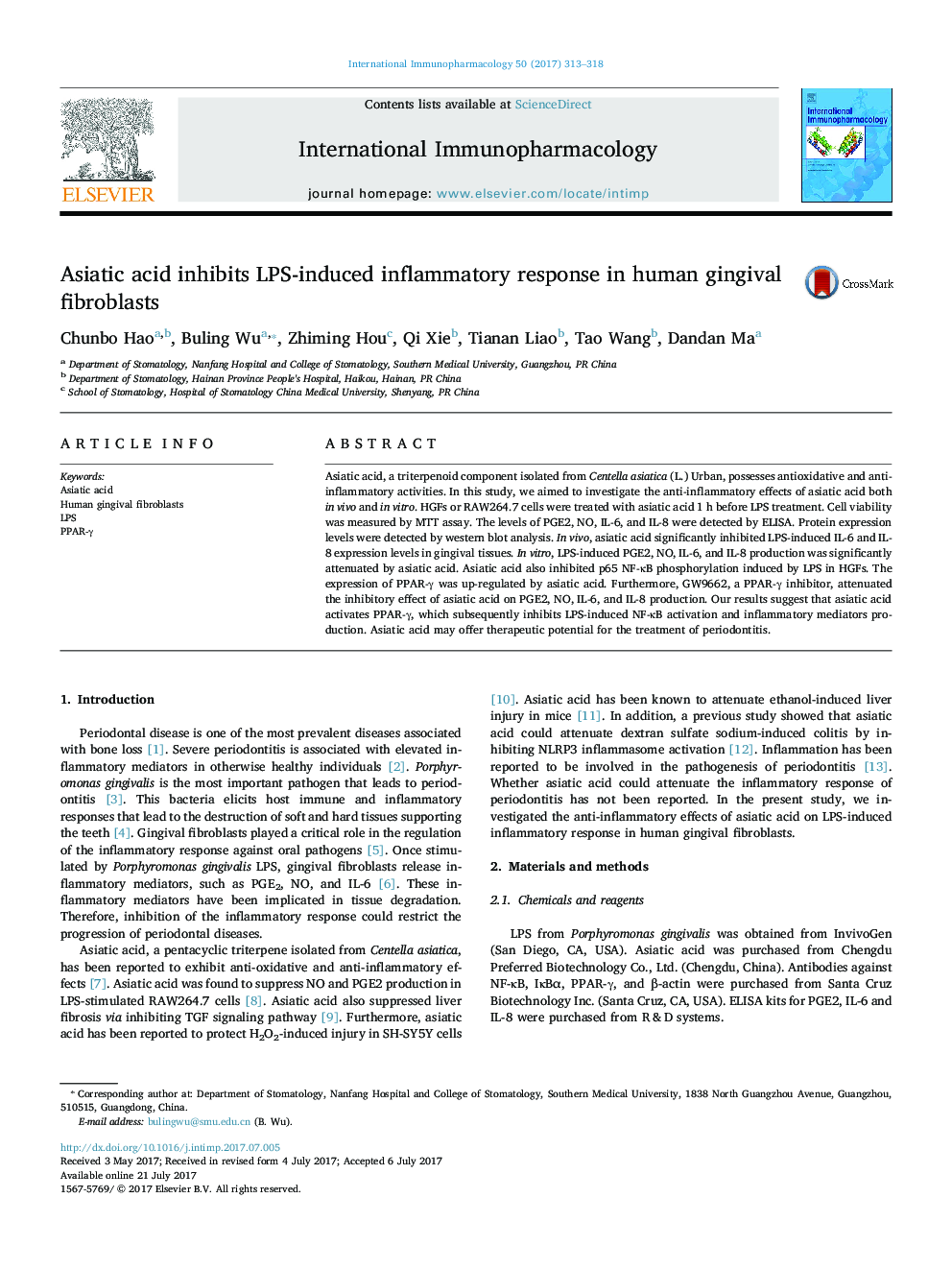| Article ID | Journal | Published Year | Pages | File Type |
|---|---|---|---|---|
| 5555323 | International Immunopharmacology | 2017 | 6 Pages |
â¢LPS-induced PGE2, NO, IL-6, and IL-8 production were significantly attenuated by asiatic acid.â¢Asiatic acid also inhibited p65 NF-κB phosphorylation induced by LPS in HGFs.â¢The expression of PPAR-γ was up-regulated by treatment of asiatic acid.â¢GW9662 attenuated the inhibition of asiatic acid on PGE2, NO, IL-6, and IL-8 production.
Asiatic acid, a triterpenoid component isolated from Centella asiatica (L.) Urban, possesses antioxidative and anti-inflammatory activities. In this study, we aimed to investigate the anti-inflammatory effects of asiatic acid both in vivo and in vitro. HGFs or RAW264.7 cells were treated with asiatic acid 1 h before LPS treatment. Cell viability was measured by MTT assay. The levels of PGE2, NO, IL-6, and IL-8 were detected by ELISA. Protein expression levels were detected by western blot analysis. In vivo, asiatic acid significantly inhibited LPS-induced IL-6 and IL-8 expression levels in gingival tissues. In vitro, LPS-induced PGE2, NO, IL-6, and IL-8 production was significantly attenuated by asiatic acid. Asiatic acid also inhibited p65 NF-κB phosphorylation induced by LPS in HGFs. The expression of PPAR-γ was up-regulated by asiatic acid. Furthermore, GW9662, a PPAR-γ inhibitor, attenuated the inhibitory effect of asiatic acid on PGE2, NO, IL-6, and IL-8 production. Our results suggest that asiatic acid activates PPAR-γ, which subsequently inhibits LPS-induced NF-κB activation and inflammatory mediators production. Asiatic acid may offer therapeutic potential for the treatment of periodontitis.
